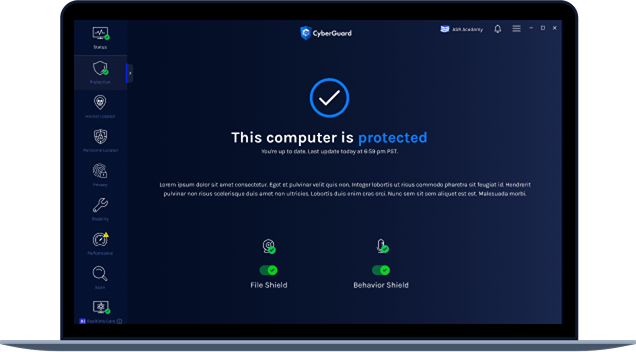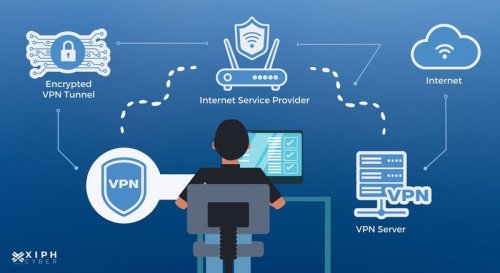How Cloud Security Risks Affects and Threaten Business
Learn why managing cloud risk demands unified visibility, continuous risk assessment, and efficient security operations.
Advances in cloud computing have revolutionised the ways in which businesses can operate. From data gathering and storage to interconnected, convenient working to fast scalability, they offer huge advantages that streamline processes, support flexible and sustainable growth, improve customer experiences, and boost competitiveness – among many others.
However, with more and more organisations relying on cloud-based technologies to conduct business – an estimated 94% of enterprises use a cloud service – it’s imperative that leaders invest in securing their systems against cyberattacks and other threats.
With cybercrime rates growing in tandem with widespread cloud adoption – tech giant Microsoft reportedly detects 1.5 million attempts a day to compromise its systems – companies are on the lookout for talented computer science and cybersecurity specialists who can help safeguard their assets.
What are the main security risks of cloud computing?
As well as being expensive, disruptive to business operations, and damaging to brand reputation, cloud hacks can result in compromised confidential data, data loss, and regulatory compliance failure.
Whether it’s a public cloud, private cloud, multi-cloud, or any other type, understanding the risks and security threats associated with cloud applications as a whole is critical. After all, an awareness of common risks ahead of time will help digital teams to better prepare for any eventuality.
Here are some of the most common security risks associated with cloud-based operations:
-
Unmanaged attack surface. The move to the cloud and an increase in remote work have fragmented attack surfaces, making it easy for attackers to find unmanaged assets with critical exposures. Each new workload that connects with these public networks presents a new, unmanaged attack surface.
-
Data breach. Data is the primary target of most cyberattacks – for example, internal documents that could sabotage a company’s stock price or cause reputational damage, and personally identifiable information (PII) and personal health information (PHI), which can lead to identity theft. Data breaches involve sensitive information being taken or compromised without the knowledge or permission of the owner.
-
Misconfiguration. Cloud service providers (CSPs) – such as Amazon Web Services (AWS), Microsoft Azure, Google Cloud Platform (GCP), Oracle Cloud, and IBM Cloud are numerous and diverse, with many organisations choosing to use more than one. This can bring with it a degree of risk, as different default configurations and implementations can lead to critical system vulnerabilities, which cybercriminals and hackers will exploit.
-
Human error. Human error can present a huge risk when building any business application, and even more so in relation to hosting cloud resources. In fact, Gartner estimates that by 2025, 99% of all cloud security failures will result from some degree of human error. For example, users may use unknown or unmanaged application programming interfaces (insecure APIs), inadvertently creating holes in cloud perimeters and leaving networks and sensitive data resources open to attack.
There are, of course, any number of other security risks and cloud security threats: denial-of-service (DoS) attacks, malware, phishing, data leakage, cloud vendor security risk, unauthorised access, insider threats, limited visibility of network systems, and many more.
How can cloud security issues be managed?
While risk cannot be eliminated, it can certainly be managed.
As well as choosing a cloud service provider wisely, the following risk management and risk assessment strategies will help reduce the risks associated with using cloud environments:
-
Cloud penetration testing. Proactive testing is an effective method to assess the cloud’s current security measures by attempting to exploit vulnerabilities. It may also indicate areas for improvement ahead of a real attack, such as reinforcing a firewall or boosting other security software.
-
Data security audit. How often are routine security audits conducted? Complete transparency regarding cloud security measures – including how effective they are at protecting personal data and files and how they are implemented – is key.
-
Contingency planning. Is a business continuity plan in place that details a strategy for protecting cloud data and systems in the event of an emergency – and how often is it tested? Are there regular backups of cloud storage? Emergencies will vary, but should include events such as natural disasters and catastrophic cyberattacks.
-
Security training. Can your CSP provide training to help upskill staff and protect against potential security risks? Team members who understand how their employer’s cloud storage and data management system works – and what the best practices are, such as enabling two-factor authentication and limiting access controls – will be better prepared to avoid attacks on their personal data, information, and files.
Organisations should not be scared of using cloud software, but they should understand the risk and ensure the right risk management strategies are in place. From this strong position, they can maximise the benefits of transformational cloud technologies and use them to drive the business towards its goals.
Where can I learn more about good cloud security?
IT and cybersecurity professionals can find out more about how to implement robust cloud security from three key international frameworks.
The International Organization for Standardization (ISO) provides checklists that can help with establishing new cloud systems and cloud infrastructure. The National Institute of Standards and Technology (NIST) presents new system frameworks and supports troubleshooting of specific problems. Cloud Security Alliance (CSA) offers operational standards and resources for auditing and vetting systems.
Why do these matter for businesses?
-
Because cloud services often remove the traditional network “perimeter”, many of these risks are amplified (for example: automatic public exposure, weak default configs).
-
The cost of a security incident in the cloud is high: financial loss, regulatory penalties, reputational hit, and operational downtime.
-
For your role (teacher + aspiring virtual assistant + data analysis interest), these keywords help you frame how businesses analyse and communicate cloud security threats — useful for class examples, training modules, or journal reflections.
To manage risk, you first need to see it...
A key part of proactive cloud risk management is being able to prioritize, knowing which threats and vulnerabilities matter most, or most urgently, and dealing with them first.
This is critical, especially because many security teams today are already buried in alerts, struggling to make sense of all the noise crashing in on them. That, combined with the visibility issues inherent in hybrid and multi-cloud environments, makes response and resolution times far slower than they should be, undermining overall security performance.
Solving these challenges requires three specific sets of capabilities: unified visibility, active risk assessment, and efficient security operations.
1. Unified visibility of cloud risks
This means not only being able to see risks across hybrid and multi-cloud environments but also having a centralized way of visualizing them, so that security teams can access a single, complete picture of the total cloud risk environment. That picture needs to include at-risk assets, overprivileged access, misconfigurations, all known vulnerabilities, and immediate, real-time threat detection alerts.
2. Active risk management
The wave of risk-management thinking running through cybersecurity generally applies very much to cloud security. It’s about assessing and reassessing risk continuously and prioritizing vulnerabilities and threats, responding to what matters most first.
This demands an understanding of both vulnerabilities and threats an organization has already encountered and emerging ones.
Continuous vigilance radically increases the odds of identifying risks early enough that they can be mitigated before data, assets, or systems are compromised, in other words, proactively.
3. Efficient security operations
Operational efficiency is what keeps the security team’s head above water as the scale and complexity of cloud environments continue to grow. Clear, simple policies, automated actions and playbooks, and fewer tools all make a difference. On its own, reducing the number of tools can have profound effects, since many organizations today may rely on 15 or more to cover their full range of cloud security needs.
Security teams also need ways to simplify how they monitor and ensure compliance with internal cloud policies and external regulations: not just a snapshot, but also showing compliance evolution over time.
Why CNAPP is critical
Unifying visibility, enabling continuous risk management, and automating efficient security operations are, separately and together, virtually impossible to accomplish without a centralized cloud security platform.
A well-integrated CNAPP that covers the full cloud security stack can provide visibility across hybrid and multi-cloud environments, support informed, risk-based prioritization of cloud security activities, and drastically reduce cybersecurity tool sprawl and alert fatigue.
While ‘platformization’ may sound like a buzzword, in truth, shifting to a platform-based approach to cloud security is the only way to comprehensively and proactively manage cloud risk, ticking many of the boxes identified by the CSA in its deep dive into today’s top cloud threats.

CyberGuard Internet Security
It delivers the unified visibility, active risk management, and operational efficiency that modern cloud environments demand. Experience complete online protection powered by award-winning security. Stay safe from every angle with advanced, powerful antivirus, privacy protection, and ransomware defense all working together to keep your digital life secure.
Share
What's Your Reaction?
 Like
0
Like
0
 Dislike
0
Dislike
0
 Love
0
Love
0
 Funny
0
Funny
0
 Angry
0
Angry
0
 Sad
0
Sad
0
 Wow
0
Wow
0
















